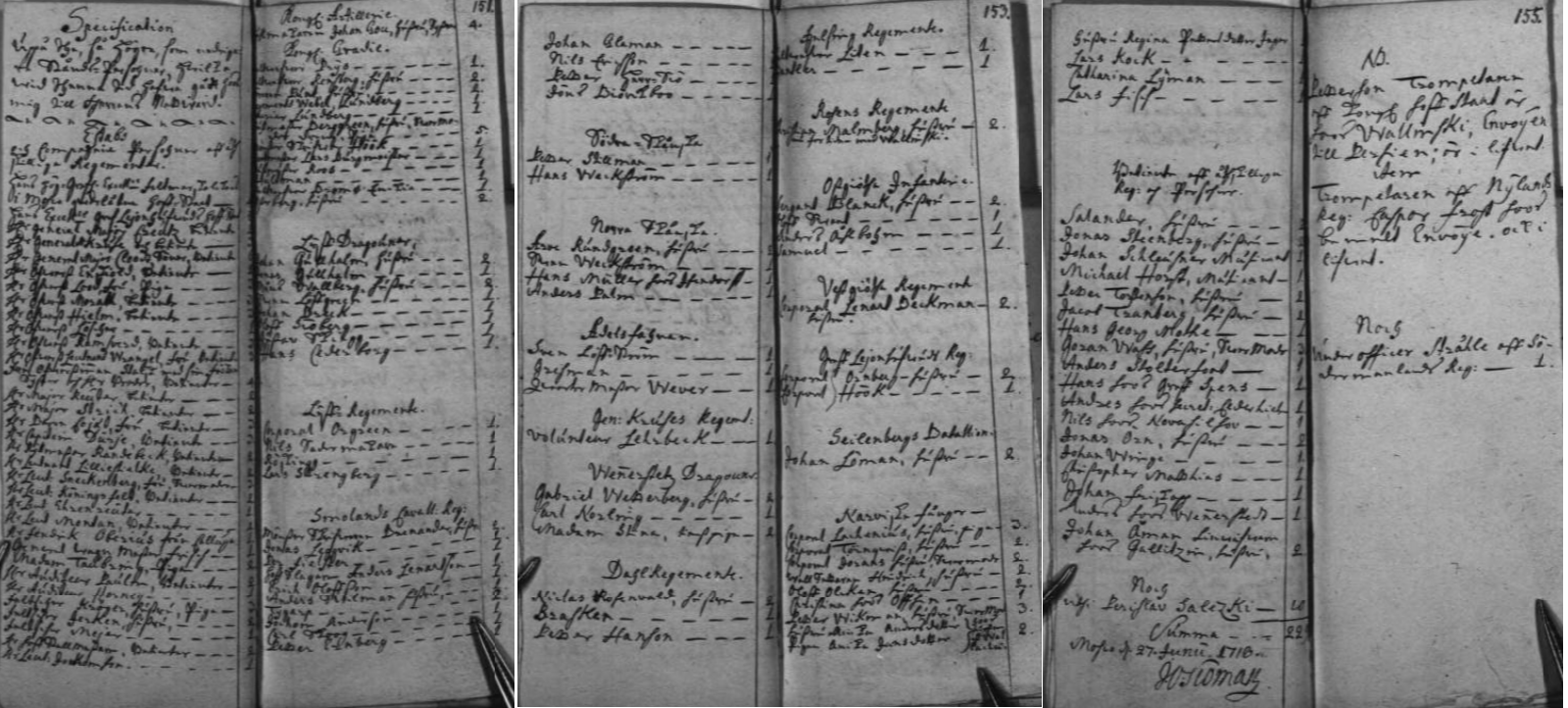
- Start
- Double-deckers
- Other swedish understringed fiddles
- Luthiers
- Arwit Rönnegren
- Johan Georg Mothe
- Hans Severin Nyborg
- Other instruments with sympathetic strings
- References to violins with sympathetic strings
- Other instruments
- Contemporary fiddles
- Blog
- Origin of sympathetic strings
- Construction guides
- Search picture
- About me
- Bror Strand
Johan Georg Mothe
Johan Georg Mothe was born in Dresden in 1690 or possibly 1695 but was later recruited to the Swedish army and participated in Charles XII's Russian campaign, after which he ended up as a prisoner of war in Russia after the battle of Poltava and the surrender at Perevolochna. On December 30, 1723, he appeared before the court in Ängelholm with two witnesses: the cavalry men Arvid Rönnegren, 42 years old from Halmstad but at the time living in Ebbarp, Kattarp parish, and Johan Engelberg, 58 years old from Hov and Ysby parish in Halland. All three had returned from captivity in Russia, and Mothe now wanted the two cavalry men to prove his identity and unmarried status, as he 'wished, according to the Lord's providence, to marry and quietly settle down in the city and use his professional skills as a luthier, a craft which he had learned in captivity. After the end of the Great Northern war, Mothe had accompanied his two witnesses to Sweden, and as they were known by the court as credible men, the court found no reason to doubt the information provided.
There has been some conflicting information about Mothe's background and several authors on the subject have been unsure of where he came from, but a relatively thorough review of church records and legal records was carried out by Paul Wilstadius before writing his article Violinmakarsläkten Mothe från Ängelholm published in Släkt och Hävd no. 3 1963. According to Wilstadius, Mothe stated to the court in Ängelholm that he had been a servant to Colonel Erik Hielm for six years before he began to learn the violin making craft during his captivity in Russia. There is no Colonel Erik Hielm in Charles XII's army, but there is a Nils Hielm who was the head of a recruited (not conscripted) dragoon regiment under his own name, which he took over from Magnus Stenbock when Stenbock was appointed governor of Skåne in 1705. Johan Georg Mothe is listed as a servant to Nils Hielm in a roll in Thomas Knipercrona Jr's embassy documents from Moscow, just before the end of his captivity. It is likely that Mothe was recruited to the Swedish army when it was stationed in Saxony from the Treaty of Altranstädt in 1706 until it marched against Poland in the second half of 1707. At the time of his death in 1765, Mothe is listed as 75 years old, but when he enrolled at the district court in Ängelholm in 1723, he stated that he was 28 years old. 1690 is a more likely year of birth as it seems more likely that he is 16-17 years old at the time of recruitment than 11-12. In addition, in 1690 the Elector of Saxony was named Johan Georg III, but in 1695 not only he but also his eldest son Johan Georg IV has died and Augustus the Strong has taken over the throne and it seems more likely to name a child after the current prince than after two who have recently died of plague and smallpox.

Johan Georg Mothe appears among Arvid Rönnegren and others such as general Adam Ludvig Lewenhaupt in a communion protocol signed by J.O Siöman in Moscow on 27 June 1718. Since no traces of Rönnegren or Mothe have been found from other parts of Russia, the current best guess is that Mothe and Rönnegren spent their captivity in Moscow and that it was there that they learned to build violins. All the literature on the subject states that it was only the senior officers who stayed in Moscow, and the assumption of Rönnegren and Mothe goes against this. On the other hand, it seems more likely that there may have been skilled violin makers in Moscow than in smaller towns, unless Rönnegren and Mothe's teacher was a fellow prisoner. The most probable, based on the style of Mothe's and Rönnegren's later production, is that the teacher was from northern Germany and people from there were common in Charles XII's army, but were also mobile across Europe during this time, and there are German merchants and similar professions all over Russia in testimonies from Carolean prisoners.
Mothe established himself in Ängelholm after he arrived there in 1722/1723 and his son Jöran and grandson Önnert later took over the business, which also had several well-known apprentices such as Jakob Hellman (who also married Mothe's daughter), Carl Johan Broberg later active in Gothenburg and Hans Severin Nyborg in Örkelljunga. Johan Georg Mothe also seems to have played instruments in some form (most likely violin or some string instrument since that is what has been preserved after him) since on 1 July 1738 it is stated in court records in Ängelholm that "the violin maker Mothe made music for them on St. Johannis day".
Johan Georg Mothe died March 16, 1765. Preserved after Johan Georg is a cello (rebuilt gamba) from 1726, a gamba from , a violin from 1745 and at least two but probably four double-deckers. No known instruments have been preserved by subsequent violin makers in the Mohte family.
| Instrument av Johan Georg Mothe |
| Mohte |
| Edvin |
| Mohte 2 |
| Kulturencellon |
| Kulturengamban |
| Angeredsfiolen |